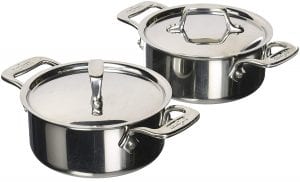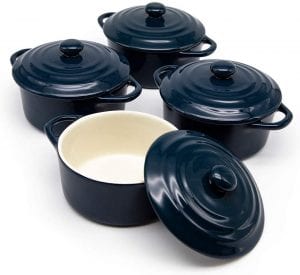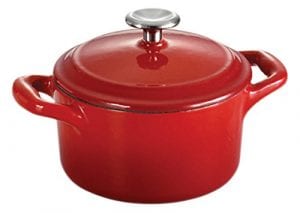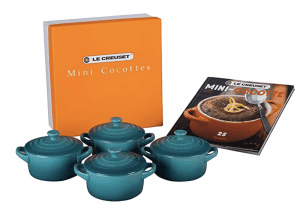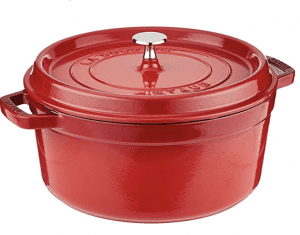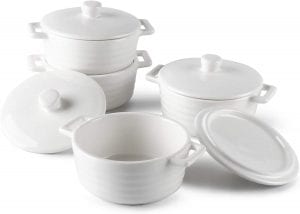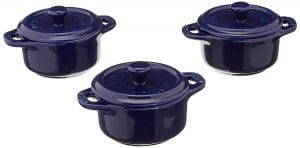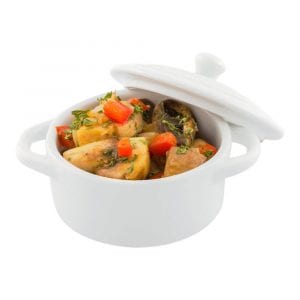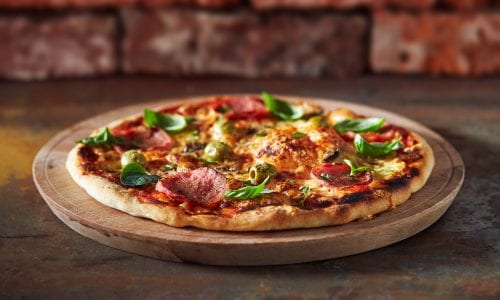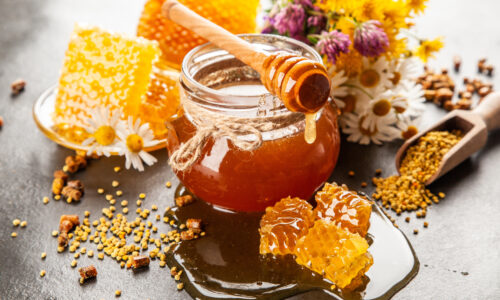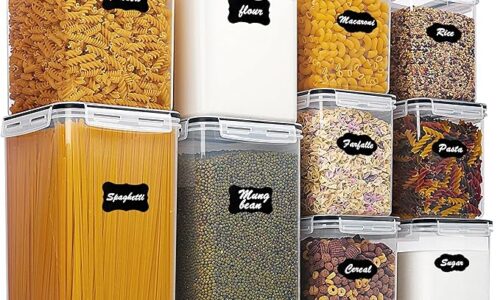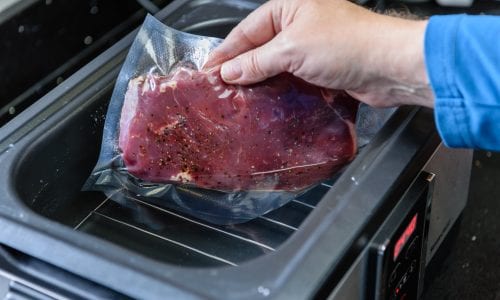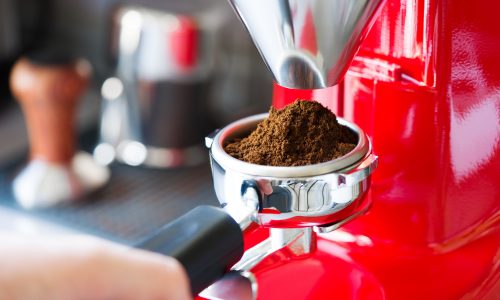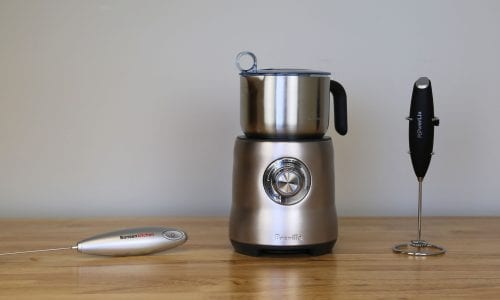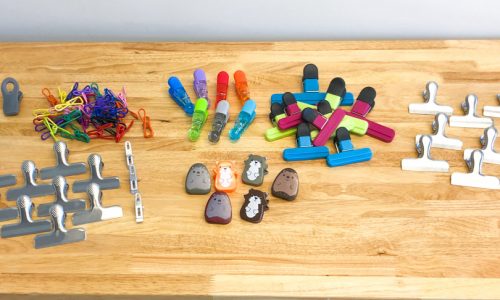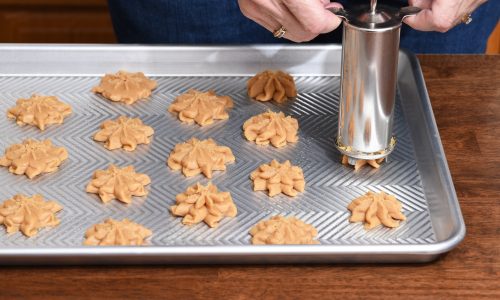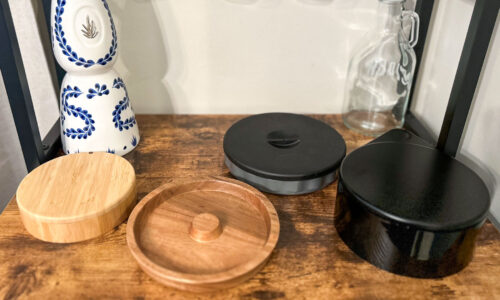The Best Cocotte
We looked at the top 8 Cocottes and dug through the reviews from 11 of the most popular review sites including and more. The result is a ranking of the best Cocottes.
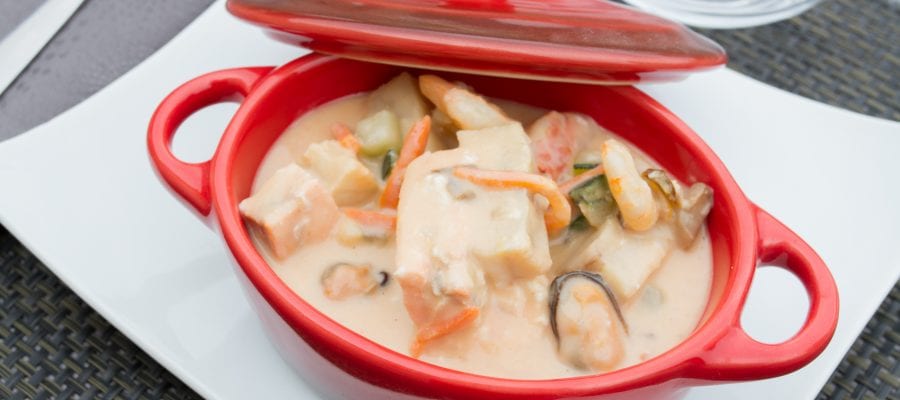
Our Review Process
Don't Waste Your Money is focused on helping you make the best purchasing decision. Our team of experts spends hundreds of hours analyzing, testing, and researching products so you don't have to. Learn more.
Our Picks For The Top Cocottes
- 1. All-Clad Stainless Steel Cocottes, 2-Piece
- 2. KooK Ceramic Mini Cocotte, 4-Piece
- 3. Tramontina Enameled Cast Iron Mini Cocotte, 10.5-Ounce
- 4. Le Creuset Stoneware Mini Cocottes, Set of 4
- 5. Staub Round Cocotte, 5.5-Quart
- 6. Sweese Porcelain Ramekins, Set of 4
- 7. Staub Ceramics Mini Cocotte Set, 3-Piece
- 8. Restaurantware Mini Round Cocotte, 3-Ounce
Those who favor a consistent cooking experience will love these All-Clad Stainless Steel Cocottes. Their steel construction distributes heat nicely, and the tall sides keep food from bubbling out. The material also lets them fit in well with traditional kitchenware.
Upgrade Your CookingThese stainless steel Dutch ovens will offer even heating and a high-end cooking experience.
For macaroni and cheese, souffles, pot pies, cobblers or other dishes meant to serve just one, these miniature Dutch ovens are sure to please. This set of four can elevate your next dinner party to something of haute cuisine levels.
Single-Serve Gourmet ToolWow your guests or delight your own taste buds with these small-scale cocotte pots.
This mini cocotte may be small, but it's durable. In the oven, it can withstand temperatures up to 450 degrees. The porcelain coating remains presentable after cooking, so you can go from oven to dinner time in a flash.
Petite Yet DurableSmall dishes remain free of toxins in this mini cocotte from Tramontina.
With an 8 ounce capacity, these cocottes make a visual statement on any table. Thanks to the non-porous enamel, they're just as good at baking as they are at serving. The finish resists cracks, scratches or lingering odors from a variety of dishes.
Small Enamel BakewareBake small dishes or make your sides more presentable in these Le Creuset cocottes.
Buying Guide
For such a versatile piece of cookware, not many casual home chefs know what a cocotte is. Even some experienced chefs might have one around the house and not know what it is, since they might be used to calling it by its more popular name: A Dutch oven.
There’s some debate over what the distinction is between a cocotte and a Dutch oven, or if there’s any distinction at all. The term “Dutch oven” conjures images of the original use for this hefty, deep, cast iron pot, cooking family-size stews and roasts over an open campfire. It’s mainly merchandisers who refer to the same pot as a cocotte, and while cocottes might be more commonly coated with porcelain or enamel to make them more presentable, it’s essentially the same thing.
Whatever you call them, cocottes have come a long way since campsite cooking. The cast iron construction makes them slow to heat up, but when they do, they hold that heat exceptionally well. Put the lid on top, and you’ve got a vessel that will make everything from moist, tender chicken to fluffy desserts.
A good porcelain or enamel coating over that cast iron won’t hurt the cooking process appreciably, and it makes the cookware equally suitable for presenting that dish at the table. Smaller cocottes might be used just as often as containers for side dishes and snacks as they are for actual cooking.
There’s no set size for a cocotte, and volume can range from 8 ounces or so to 9 quarts or more. The bigger they get, the more serious cooking you can expect to do with them.
While not all cocottes are made from cast iron, be sure to look for that type of material if you plan on getting the most out of Dutch oven recipes. Stainless steel or copper cocottes might be lighter and less expensive, but they won’t cook nearly the same way cast iron will.
Why we recommend these cocottes?
Products Considered
Products Analyzed
Expert Reviews Included
User Opinions Analyzed
Our experts reviewed the top 8 Cocottes and also dug through the reviews from 11 of the most popular review sites including and more. The result is a ranking of the best of the best Cocottes.
DWYM is your trusted roduct review source. Our team reviews thousands of product reviews from the trusted top experts and combines them into one easy-to-understand score. Learn more.
The Best Bang For Your Buck
KooK Ceramic Mini Cocotte, 4-Piece
Key Takeawy
For macaroni and cheese, souffles, pot pies, cobblers or other dishes meant to serve just one, these miniature Dutch ovens are sure to please. This set of four can elevate your next dinner party to something of haute cuisine levels.
What to Look For
- Cocottes have plenty of uses, but look for one that has a recessed lid if you want an extra bit of versatility. The convex surface may take a little space away if you’re covering a full pot, but you can use the makeshift bowl to cool down your dish quicker by filling it with ice. You can also use it to hold sauces or extra sides. Get creative!
- If your cocotte is made of “naked” cast iron, you’ll get much better use out of it by seasoning the pot before the first use. Simply coat it with a thin layer of oil, then leave it upside down in the oven for 45-60 minutes at 350 degrees. (The oil will drip, so you may want to lay down a sheet of foil underneath it.) This coating of dried oil will give your Dutch oven non-stick properties and help food cook more evenly. If your cocotte has an enamel or porcelain coating, there’s no need for seasoning, though you may want to oil up any exposed portions of cast iron at the lip of the pot.
More to Explore
The term “cocotte” certainly sounds more refined than a Dutch oven, which is another perfectly acceptable thing to call your cast iron pot. As you might expect, the word is originally French. But while its early meaning does indeed translate to a type of pot, it has a number of slang translations as well, including a child’s word for “hen.”

